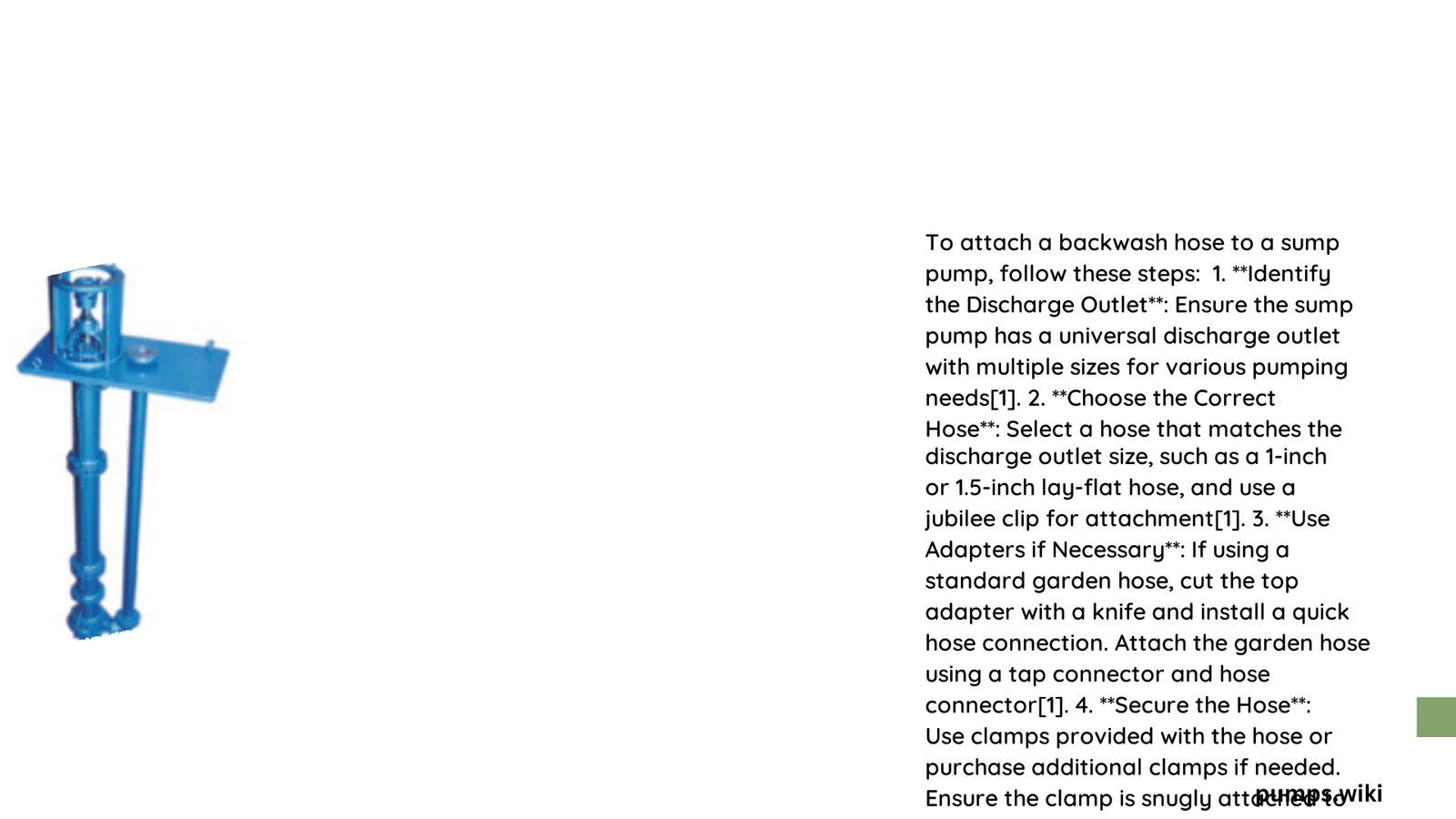Attaching a backwash hose to a sump pump requires careful precision and understanding of proper connection techniques. Homeowners often struggle with securing the hose correctly, which can lead to water leakage, inefficient drainage, and potential water damage. This comprehensive guide will walk you through each critical step of attaching a backwash hose to your sump pump, ensuring a secure, watertight connection that prevents potential water-related issues in your home’s foundation and basement.
What Tools Do You Need for Attaching Backwash Hose?
Before beginning the installation process, gather the following essential tools:
| Tool | Purpose | Recommended Type |
|---|---|---|
| Screwdriver | Tightening clips | Phillips head |
| Jubilee Clips | Securing hose | Stainless steel |
| Measuring Tape | Determining hose length | Flexible metal |
| Hose Tail | Connecting pump outlet | Matching pump size |
| Adjustable Wrench | Tightening connections | Medium-sized |
How to Select the Right Hose for Sump Pump?

Selecting the appropriate hose is crucial for effective water drainage. Consider these factors:
- Diameter Matching
- Measure your sump pump’s outlet diameter
- Choose a hose with identical or slightly larger diameter
-
Common sizes: 1″, 1.5″, and 2″ outlets
-
Material Considerations
- Use flexible PVC or rubber hoses
- Ensure UV and weather resistance
-
Check temperature tolerance range
-
Length Requirements
- Measure distance from pump to discharge point
- Add extra 2-3 feet for flexibility
- Avoid excessive length to prevent friction loss
What Are the Step-by-Step Connection Techniques?
Prepare the Sump Pump Outlet
- Clean the pump outlet thoroughly
- Remove any debris or old sealant
- Inspect for any damage or corrosion
Attach Hose Tail
- Screw the hose tail onto the pump outlet
- Use thread tape for additional sealing
- Ensure tight, but not over-tightened connection
Secure Hose Connection
- Slide hose over the hose tail
- Position Jubilee clip around hose and tail
- Tighten clip using screwdriver
- Ensure no gaps or potential leak points
What Common Mistakes Should You Avoid?
- Incorrect Sizing: Never use a hose smaller than pump outlet
- Loose Connections: Always double-check clip tightness
- Improper Routing: Direct water away from foundation
- Ignoring Slope: Ensure slight downward gradient for drainage
How to Maintain Your Sump Pump Hose?
Regular Inspection Checklist
- Check for cracks or wear every 3-4 months
- Verify clip tightness annually
- Clean hose exterior to prevent debris buildup
- Inspect discharge area for potential blockages
Seasonal Maintenance
- Before winter: Drain and store indoor if possible
- In spring: Check for winter damage
- Summer: Ensure no algae or mineral buildup
Troubleshooting Connection Issues
- Leaking: Recheck clip and hose tail connection
- Poor Drainage: Verify hose is not kinked
- Reduced Flow: Clean potential blockages
- Corrosion: Replace hose tail if significant wear detected
Pro Tips for Optimal Performance
- Use flexible PVC for complex routing
- Consider professional installation if uncertain
- Invest in high-quality, durable materials
- Regularly monitor system performance
Reference:
– Sump Pump Installation Guide
– Drainage System Maintenance
– Home Water Management
